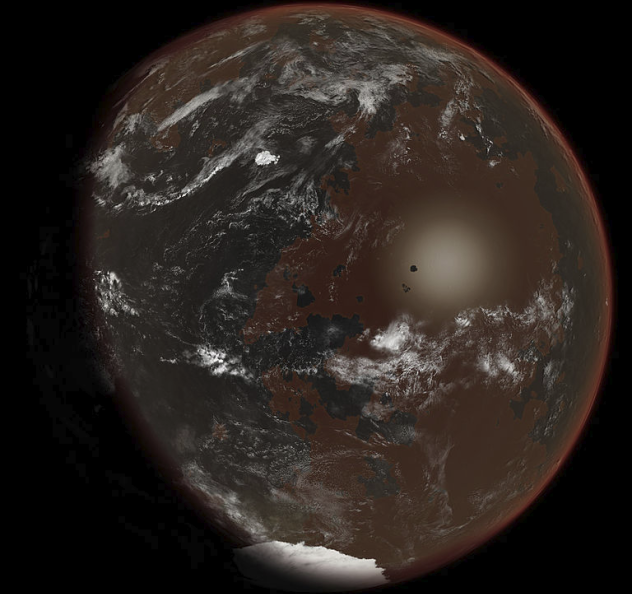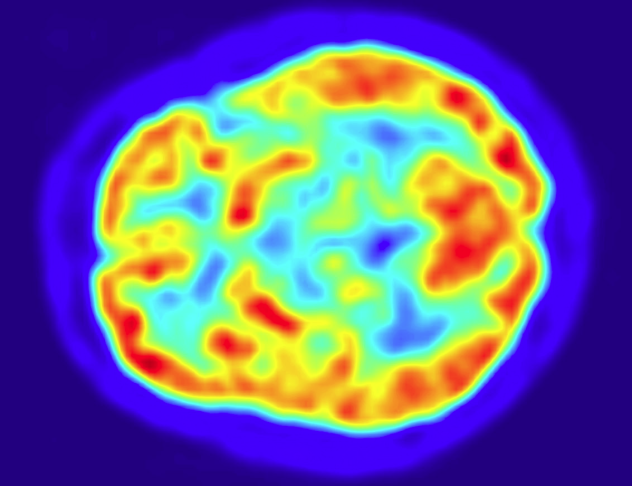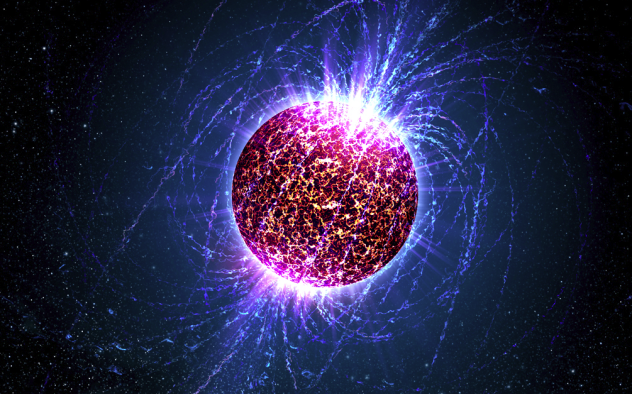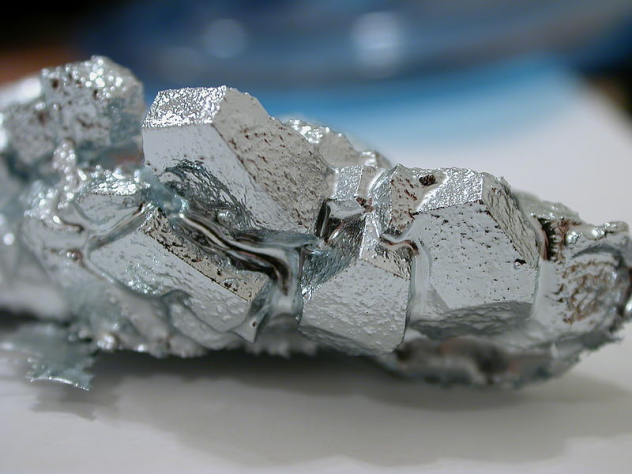 Weird Stuff
Weird Stuff  Weird Stuff
Weird Stuff  Miscellaneous
Miscellaneous Top 10 Things Crypto Was Supposed to Change & What Actually Did
 History
History 10 Huge Historical Events That Happened on Christmas Eve
 Music
Music 10 Surprising Origin Stories of Your Favorite Holiday Songs
 History
History 10 Less Than Jolly Events That Occurred on December 25
 Weird Stuff
Weird Stuff 10 Funny Ways That Researchers Overthink Christmas
 Politics
Politics 10 Political Scandals That Sent Crowds Into the Streets
 Weird Stuff
Weird Stuff Ten Bizarre Facts About The Doge Meme
 Our World
Our World 10 Ways Your Christmas Tree Is More Lit Than You Think
 Movies and TV
Movies and TV The 10 Coolest Stars to Set Sail on The Love Boat
 Weird Stuff
Weird Stuff 10 Fascinating Facts You Might Not Know About Snow
 Miscellaneous
Miscellaneous Top 10 Things Crypto Was Supposed to Change & What Actually Did
 History
History 10 Huge Historical Events That Happened on Christmas Eve
Who's Behind Listverse?

Jamie Frater
Head Editor
Jamie founded Listverse due to an insatiable desire to share fascinating, obscure, and bizarre facts. He has been a guest speaker on numerous national radio and television stations and is a five time published author.
More About Us Music
Music 10 Surprising Origin Stories of Your Favorite Holiday Songs
 History
History 10 Less Than Jolly Events That Occurred on December 25
 Weird Stuff
Weird Stuff 10 Funny Ways That Researchers Overthink Christmas
 Politics
Politics 10 Political Scandals That Sent Crowds Into the Streets
 Weird Stuff
Weird Stuff Ten Bizarre Facts About The Doge Meme
 Our World
Our World 10 Ways Your Christmas Tree Is More Lit Than You Think
 Movies and TV
Movies and TV The 10 Coolest Stars to Set Sail on The Love Boat
10 Hypothetical Forms Of Life
In the search for extraterrestrial intelligence, some have been accused of harboring a sense of “carbon chauvinism,” expecting other life-forms in the universe to be made of the same biochemical building blocks as we are and tailoring our searches accordingly. Here are 10 examples of biological and nonbiological systems that stretch the definition of “life.”
SEE ALSO: 10 Reasons Alien Life Really Is Probably Out There Somewhere
10 Methanogens
In 2005, Heather Smith from the International Space University in Strasbourg and Chris McKay of NASA’s Ames Research Center produced a paper speculating on the possibility of the existence of methane-based life, or “methanogens.” Such life-forms could consume hydrogen, acetylene, and ethane and exhale methane instead of carbon dioxide.
This would make it possible for habitable zones for life to exist on cold worlds like Saturn’s moon Titan. Like Earth, the Titanian atmosphere is mostly nitrogen, but it’s mixed with methane. Titan is also the only place in our solar system other than Earth to have large liquid bodies—lakes and rivers of an ethane-methane mix. (Underground bodies of water do also exist on Titan, its sister moon Enceladus, and the Jovian moon Europa, however.) Liquid is considered necessary for the molecular interactions of organic life, and most attention has been focused on water, but such interactions are also possible in ethane and methane.
The NASA–ESA Cassini–Huygens mission in 2004 observed a muddy world with a temperature of
The implications for the search for extraterrestrial life are large. Not only could life potentially arise on Titan, but it could potentially be detected by hydrogen, acetylene, and ethane depletion on the surface. Methane-dominated atmospheres on moons and planets could exist around Sun-like stars, but also around red dwarf stars with a wider habitable zone (as worlds like Titan are opaque to blue and ultraviolet light but transparent to red and infrared light). If NASA launches the Titan Mare Explorer in 2016, we may have to wait until 2023 to find out more.
9 Silicon-Based Life
Silicon-based life is perhaps the most common form of alternate biochemistry explored in popular science fiction, most notably in the case of the Horta from Star Trek. The concept is an old one, dating back to speculations by H.G. Wells in 1894: “One is startled towards fantastic imaginings by such a suggestion: visions of silicon-aluminium organisms—why not silicon-aluminium men at once?—wandering through an atmosphere of gaseous sulphur, let us say, by the shores of a sea of liquid iron some thousand degrees or so above the temperature of a blast furnace.”
Silicon is popular precisely because it is so similar to carbon and can form four bonds just like carbon, opening the possibility of an entirely silicon-based biochemical system. It is the most abundant element in Earth’s crust other than oxygen. There is a form of algae on Earth which incorporates silicon into its growth process. Silicon suffers the disadvantage of playing second fiddle to carbon, which is capable of forming more stable and diverse complex structures necessary for life. Carbon molecules incorporate oxygen and nitrogen, which form extremely stable bonds. Complicated silicon-based molecules have an unfortunate tendency to fall apart. Carbon is also extremely common throughout the universe and has been for billions of years.
Silicon life is unlikely to emerge on an Earth-like environment, as most free silicon would be locked up in volcanic and igneous rocks made of silicate minerals. It is theorized that things might be different in a high-temperature environment, but no evidence has been found. An extreme world like Titan could support silicon-based life, perhaps making up the basis of the methanogens mentioned earlier, as silicon molecules such as silanes and polysilanes mimic Earth’s organic chemistry. However, on Titan, the surface is dominated by carbon, while most of the silicon is deep beneath the surface.
NASA astrochemist Max Bernstein has speculated that silicon-based life could exist on a very hot planet with a hydrogen-rich and oxygen-poor atmosphere, allowing complex silane chemistry with reversible silicon bonds with selenium or tellurium, but he thought it unlikely or rare. On Earth, such organisms would replicate very slowly, and our respective biochemistries would be of no threat to each other. They could slowly consume our cities, but, “Presumably you could take a jackhammer to it.”
8 Other Alternate Biochemistries

There have been a number of other proposals for life systems based on something other than carbon. Like carbon and silicon, boron has a tendency to form strong covalent molecular compounds, forming many different structural varieties of hydride, in which boron atoms are linked by hydrogen bridges. Like carbon, boron can form bonds with nitrogen to create compounds which have chemical and physical properties similar to alkanes, the simplest organic compounds. The main issue with boron-based life is that the element is, as far as we know, extremely rare. Boron-based life would be most feasible in an environment where the temperature is low enough for ammonia to be a liquid solvent, as chemical reactions would be more controllable.
Another hypothetical form of life that received some media attention is arsenic-based life. All life on Earth is made up of carbon, hydrogen, nitrogen, oxygen, phosphorus, and sulfur, but in 2010, NASA claims to have found a bacterium named GFAJ-1 which could incorporate arsenic instead of phosphorus into its cell structure with no ill effects. GFAJ-1 thrives in the arsenic-rich waters of Mono Lake in California. Arsenic is poisonous to every living thing on the planet, except for a few microorganisms which can tolerate or breathe it. GFAJ-1 was the first case of an organism incorporating the element as a biological building block. Independent researchers threw cold water on the claims when they found no evidence of arsenic being incorporated into DNA, merely finding arsenate clinging to the side of GFAJ-1 DNA. Still, interest in the possibility of arsenic-based biochemistry has received a boost.
Ammonia has been named as a possible alternative to water for the building of life-forms. Some have posited a biochemistry based on nitrogen-hydrogen compounds using ammonia as a solvent, which could be used to build proteins, nucleic acids, and polypeptides. Any ammonia-based life-form would have to deal with the lower temperatures in which it takes a liquid state as well as a smaller temperature window. Solid ammonia is denser than liquid ammonia, so there is no way to stop it from freezing in a cold snap. This isn’t a problem for single-celled organisms but would likely cause havoc for multicellular organisms. Still, the possibility exists for ammonia-based single-celled organisms on the colder planets of the solar system, as well as gas giants like Jupiter.
Sulfur is believed to have formed the basis for early metabolism on Earth, and organisms metabolizing sulfur instead of oxygen are known to exist in some extreme environments on Earth. Perhaps on a different world, sulfur-based life-forms would have an evolutionary advantage. Some believe that nitrogen and phosphorus could also take the place of carbon, probably in very specific conditions.
7 Memetic Life

Richard Dawkins believes that the operating principle behind life is that, “All life evolves by the differential survival of replicating entities.” Life needs to be able to replicate (with some variation) and to be placed in an environment were natural selection and evolution are possible. In his book, The Selfish Gene, Dawkins pointed out that concepts and ideas develop within the brain and spread between people through communication. In many ways, this resembles the behavior and adaptation of genes, so he dubbed them “memes.” Some compare songs, jokes, and rituals shared in human societies with the very early stages of organic life—free radicals swimming in the Earth’s ancient seas. Such creatures of the mind replicate, evolve, and compete for survival in the realm of ideas.
Such memes existed before humanity, in social bird calls and learned behavior in primates. When humanity became capable of abstract thought, these memes became further developed, governing tribal relations and forming the basis of the first customs, culture, and religion. The invention of writing further spurred on the development of memes, as they could propagate further over space and time, propagating memetic information in the same way that genes propagate biological information. To some this is pure analogy, but others contend that memes represent the basis of a unique, if somewhat rudimentary and limited, form of life.
Some have taken it further. George van Driem has developed the theory of Symbiosism, which holds that languages are actually life-forms of their own. Older linguistic theories held that language was a kind of parasite, but van Driem holds we exist in a cooperative relationship with the memetic entities inhabiting our brains. We live in a symbiotic relationship with these language organisms: Without us, they cannot exist, and without them, we are little more than feral hominids. He believes that the illusion of consciousness and free will emerges from the interaction between the animal instincts, hungers, and lusts of the human host and a linguistic symbiont reproducing itself through ideas and meaning.
6 XNA-Based Synthetic Life
Life on Earth is based on two information-carrying molecules, DNA and RNA, and scientists have long wondered whether it was possible that other similar molecules are possible. While any polymer can store information, RNA and DNA display heredity, encoding and passing on genetic information, and are capable of adapting over time through evolutionary processes. DNA and RNA are strings of molecules called nucleotides, made up of three chemical components—a phosphate, a five-carbon sugar group (either a deoxyribose sugar in DNA or a ribose sugar in RNA), and one of five standard bases (adenine, guanine, cytosine, thymine, or uracil).
In 2012, a team of scientists from England, Belgium, and Denmark became the first in the world to develop xeno-nucleic acid (XNA), synthetic nucleotides functionally and structurally similar to DNA and RNA. These were developed by replacing the deoxyribose and ribose sugar groups with various substitutes. Such molecules had been developed before, but this was the first time that they had been shown to be capable of replication and evolution. In DNA and RNA, replication occurs through molecules called polymerases, which can read, transcribe, and reverse transcribe normal nucleic acid sequences. The team created synthetic polymerases to create six new genetic systems—HNA, CeNA, LNA, ANA, FANA, and TNA.
One of the new genetic systems, HNA or hexitol nucleic acid, was found to be robust enough to store enough genetic information to serve as the basis for biological systems. Another, threose nucleic acid or TNA, is considered a potential candidate for the mysterious primordial biochemistry that reigned before the dawn of life.
There are a number of potential applications for this development. Further studies could help develop better models for the appearance of life on Earth and have implications for speculations on biology. XNAs could have therapeutic applications, creating nucleic acid treatments able to bind to specific molecular targets without degrading as quickly as DNA or RNA. They could even form the basis for molecular machines, or an entirely synthetic form of life.
However, before that would be possible, other enzymes suited to a particular XNA would have to be developed. Some of those enzymes were developed in the UK in late 2014. There is also a possibility that XNA could get into the genetic information of an RNA/DNA organism and cause harm, so safeguards must be put in place.
5 Chromodynamic, Weak Nuclear Force And Gravitational Life

In 1979, scientist and nanotechnologist Robert A. Freitas Jr. argued for the possibility of nonbiological life. He claimed that possible metabolisms for living systems are based on the four fundamental forces—electromagnetism, strong nuclear force (or quantum chromodynamics), weak nuclear force, and gravity. Electromagnetic life is the standard biological life found on Earth as well as alien biological configurations and machine-based life-forms.
Chromodynamic life might be possible based on the strong nuclear force, which is the strongest of the fundamental forces, but only over extremely short distances. He suggests that such an environment is possible on a neutron star, a heavy, spinning object 10–20 kilometers (6–12 mi) in diameter with the mass of a star. With high-density, incredible magnetic fields and gravity 100 billion times that of Earth, they have a 3-kilometer-thick (2 mi) crust of crystalline iron nuclei. Under this is a sea of extremely hot neutrons with a variety of nuclear particles, including protons and atomic nuclei and possibly highly neutron-rich “macronuclei.” These macronuclei could theoretically form larger supernuclei analogous to organic molecules, with neutrons acting as the equivalent of water in an extremely bizarre pseudo-biological system.
Freitas sees weak-nuclear-force life-forms as less likely, as weak forces operate only only at sub-nuclear ranges, and they are not particularly strong. As it shows up frequently in radioactive-beta and free-neutron decay, a weak-force life-form could exist by carefully controlling the weak interactions in its environment. He imagined beings composed of atoms with excess neutrons that become radioactive when they die. It is speculated that there are regions of the universe where the weak nuclear force is stronger, increasing the chances for this kind of life.
Gravitational creatures could also exist, as gravity is the most common and efficient fundamental force in the universe. Such creatures could derive energy from gravity itself, with immense gravitational entities feeding on collisions between black holes, galaxies, or other celestial objects, somewhat smaller entities from the rotational and orbital movement of planets, and still smaller gravitational entities feeding from the energy of waterfalls, wind patterns, tides and ocean currents, or even earthquakes.
4 Dusty Plasma Life-Forms

Organic life on Earth is based on carbon compound molecules, and we have already discussed several biological alternatives to carbon. But in 2007, an international team led by V.N. Tsytovich of the General Physics Institute of the Russian Academy of Science documented that in the correct conditions, particles of inorganic dust can become organized into helical structures, which can then interact with each other in a manner very similar to organic chemistry. This behavior occurs in a state of plasma, the fourth state of matter beyond solid, liquid, and gas, where electrons are torn from atoms, leaving behind a mass of charged particles.
Tsytovich’s team found that as electronic charges became separated and the plasma became polarized, particles in the plasma self-organized into corkscrew-shaped helical structures electrically charged and attracted to one another. They could also divide to form copies of the original structure, much like DNA, and induce changes in their neighbors. According to Tsytovich, “These complex, self-organized plasma structures exhibit all the necessary properties to qualify them as candidates for inorganic living matter. They are autonomous, they reproduce and they evolve.”
Some are understandably skeptical and believe that the claims that the inorganic structures represent life are more PR than serious, scientific assertions. While the helical structures forming in plasma may resemble DNA, resemblance in form doesn’t necessarily mean resemblance in function. Furthermore, the fact that the helices self-replicate is also no indication of life potential; clouds can do that, too. Most damningly, much of the research was based on computer models rather than observation.
One of the experiment’s participants claimed that while the results indeed resembled life, at the end of the day, they were “just a special form of plasma crystal.” Still, if it is possible that inorganic particles in plasma could develop into self-replicating, evolving life-forms, they may be the most common form of life in the universe, thanks to the ubiquitous plasma and interstellar dust clouds throughout space.
3 iCHELLs

Professor Lee Cronin, Gardiner Chair of Chemistry at the College of Science and Engineering of the University of Glasgow, has a dream, and that dream is to create living cells out of metal. He used polyoxometalates, a range of metal atoms linked to oxygen and phosphorus, to create cell-like bubbles that he calls inorganic-chemical-cells or iCHELLs.
Cronin’s team began by creating salts from negatively charged ions of the large metal oxides bound to a small, positively charged ion such as hydrogen or sodium. A solution of these salts is then squirted into another salt solution full of large, positively charged organic ions bound to small, negative ones. The two salts meet and swap parts, and the large metal oxides become partnered with the large organic ions, forming a kind of shell or bubble that’s insoluble in water. By modifying the metal oxide backbone, the bubbles can be given the characteristics of biological cell membranes, selectively allowing chemicals in and out of the cell, potentially allowing for the same kind of controlled chemical reactions that occur in living cells.
The team has also made bubbles within bubbles, mimicking the internal structures of biological cells, and has made progress toward creating an artificial form of photosynthesis, which could potentially be used to create artificial, plant-like cells. Other synthetic biologists note that the cells will never be lifelike until they have some system for replication and evolution, like DNA. Cronin is said to be hopeful that continued development will show the way. Potential applications for the technology include developing materials for solar fuel devices (the cells can also store electricity) and potential medical applications.
According to Cronin, “The grand aim is to construct complex chemical cells with life-like properties that could help us understand how life emerged and also to use this approach to define a new technology based upon evolution in the material world—a kind of inorganic living technology.”
2 Von Neumann Probes
Machine-based artificial life is a common idea, almost trite, so we’ll focus on the fascinating Von Neumann probes for the purposes of this article. They were first envisioned by mid-20th-century Hungarian mathematician and futurist John Von Neumann, who believed that in order to replicate the functions of the human brain, a machine would require self-control and self-repair mechanisms. He came up with the idea of creating self-replicating machines, based on observations of how life increases in complexity through replication. He believed that such machines should have some kind of universal constructor, which would allow them to not only build replicas of themselves but also potentially improved or altered versions, allowing for evolution and increased complexity over time.
Other futurist thinkers like Freeman Dyson and Eric Drexler soon applied these concepts to the field of space exploration and came up with the concept of the Von Neumann probe. Sending self-replicating robots into space may be the most efficient way to colonize the galaxy, possibly occupying the entire Milky Way in less than one million years, even if they are constrained by the speed of light.
As Michio Kaku explains:
A Von Neumann probe is a robot designed to reach distant star systems and create factories which will reproduce copies themselves by the thousands. A dead moon rather than a planet makes the ideal destination for Von Neumann probes, since they can easily land and take off from these moons, and also because these moons have no erosion. These probes would live off the land, using naturally occurring deposits of iron, nickel, etc. to create the raw ingredients to build a robot factory. They would create thousands of copies of themselves, which would then scatter and search for other star systems.
Various versions of the basic Von Neumann probe idea have been developed over the years, including exploration and reconnaissance probes for quiet exploration and subtle surveillance of extraterrestrial civilization, communication probes spread throughout space to better detect extraterrestrial radio signals, worker probes to build supermassive cosmic structures, and colonization probes to seed new worlds with settlers. There could even be uplift probes designed to guide nascent civilizations into space. More worryingly, there could even be berserker probes designed to extinguish any trace of organic life they encounter, which may necessitate the building of police probes to guard against such attacks. Considering that some compare Von Neumann probes to a kind of interstellar virus, we might want to think carefully before embarking on such developments.
1 Gaia Hypothesis
In 1975, Drs. James Lovelock and Sidney Epton coauthored an article for New Scientist entitled “The quest for Gaia.” While the conventional view is that life arose on Earth and has prospered because the material conditions were right, Lovelock and Epton argue that life itself has taken an active role in determining and maintaining the conditions for its survival. They proposed that all living matter on Earth, in the air, oceans, and land surface, are part of a single system behaving much as a living super-organism, able to modify the temperature of the surface and the composition of the atmosphere in order to ensure its survival. They dubbed this system Gaia, after the Greek Earth goddess. It exists to maintain a homeostasis by which the biosphere can exist in the Earth system.
Lovelock had been working on his Gaia hypothesis since the mid-1960s. The idea is that Earth’s biosphere has a number of natural cycles, and when one goes awry, the others compensate in order to maintain habitability for life. This has been used to explain why the atmosphere isn’t mostly carbon dioxide or why the seas aren’t excessively salty. While volcanic eruptions created an early atmosphere of primarily carbon dioxide, nitrogen-excreting bacteria developed, and plants produced oxygen through photosynthesis. After millions of years, the atmosphere changed to our current, reasonably pleasant one. Despite rivers carrying salt to the oceans from rocks, oceanic salinity remains stable at 3.4 percent because the salt is leeched out through cracks in the ocean floor. These are not conscious processes but the result of feedback loops that keep the planet in a habitable balance.
Other evidence includes how if it weren’t for biotic activities, elements such as methane and hydrogen would vanish from the atmosphere in only a few decades. Also, in spite of the Sun increasing in temperature by 30 percent over the last 3.5 billion years, the average global temperature has only fluctuated by a mere 5 degrees Celsius (9 °F) in that time, thanks to a regulatory mechanism that removed carbon dioxide from the atmosphere and locked it up in fossilized organic matter.
Initially, Lovelock’s ideas were greeted with ridicule and accusations of New Age mysticism and pseudoscience. Over time, however, the Gaia hypothesis has had an influence on the way scientists think about the Earth’s biosphere, helping to call attention to components of the biosphere and how they affect the whole. Today, the Gaia hypothesis is more respected than accepted by scientists. It is regarded by many as a positive cultural framework for which scientific studies can be pursued, with respect for the Earth as a global ecosystem.
Paleontologist Peter Ward has developed the rival Medea hypothesis, named for the mother who killed her children in Greek mythology, which states that life is essentially suicidal and self-destructive. He points to how historically, most mass extinctions have been caused by life-forms, such as microorganisms or hominids in pants causing dire changes to the Earth’s atmosphere.
David Tormsen is a memetic construct living inside a carbon shell occasionally called Hodor, who consumes beer, coffee, and the Internet and excretes lists. Email him at [email protected].








